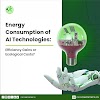World War I, sparked by the assassination of Archduke Franz Ferdinand in 1914, ravaged Europe for four years. Allied against the Central Powers, nations like Britain, France, and the US ultimately triumphed over Germany, Austria-Hungary, and their allies. Trench warfare and brutal new technologies led to unprecedented death and devastation.
Charging Belgian Soldiers in WWI
Photo: Hulton Archive/Getty Images
Our environment has been battered by bombs, explosions, and heavy artillery - the brutal realities of war. As advocates for the planet, we have analyzed the devastating impact of this conflict on the natural world. The damage is vast and far-reaching, with forests being cleared for military purposes, water sources contaminated with chemicals and debris, and endangered species facing extinction.
The immense scale of the deadliest war in history, World War I, demanded massive weapons production, leading to rapid development fueled by new technologies. However, this advancement came at a cost, leaving a legacy of complex problems in its wake.
Environmental Problems
Land Degradation:
- Chemical warfare and munitions contaminated vast areas of land, hindering food production for generations.
- Trench digging and deforestation accelerated soil erosion, exposing fertile land to damage.
- Deforestation for fuel and construction destroyed habitats and disrupted ecosystems.
Water Contamination:
- Deliberate and accidental oil spills suffocated aquatic life and polluted essential drinking water sources.
- Unregulated waste disposal introduced toxic chemicals and debris, threatening human health and marine ecosystems.
Air Pollution:
- Reliance on fossil fuels and weaponry created a choking haze of air pollution.
- Smoke from munitions and factories obscured the sun and compromised human and avian respiration.
Deforestation during WWI
Photo: worldwarzero.com
Impact on Climate
With the high degree of mechanization of the military, large amount of fossil fuels are used. Fossil fuels are a major contributor to global warming and climate change.
Not only war can be destructive to the social environment but military activities produce extensive amounts of greenhouse gasses that contribute to anthropogenic climate change, pollution and cause resource depletion among other environmental impacts. Additionally military activities involve high emissions of pollution.
Impact on Human Life
The impact of the war on human lives was immense. Several lives were lost, many more injured and some displaced. Statistically, World War I resulted in a staggering loss of life. An estimate of 9 million combatants and 6 million civilians were recorded dead, 23 million soldiers were approximately recorded injured. The war also had devastating impacts on communities and localities around the world. Such impacts include food shortage and starvation. World War I was also said to be the major driver in the the spanish flu pandemic.
How to Save Our Environment
- Developing and using environmentally friendly weapons.
- Protecting forests and other natural resources.
- Optimizing refugee camp setting.
A Call for Action
The lasting environmental impacts of World War I serve as a stark reminder of the devastating consequences of war. It is crucial to learn from the past and strive for peaceful solutions to international conflicts. We must also invest in environmental restoration efforts to heal the wounds inflicted by past wars and prevent future conflicts from causing further damage to our planet.
References
Britannica, T. Editors of Encyclopaedia (2020, October 2). Key Facts of World War I. Encyclopedia Britannica. https://www.britannica.com/summary/Key-Facts-of-World-War-I
Cronier, Emmanuelle: Food and Nutrition , in: 1914-1918-online. International Encyclopedia of the First World War, ed. by Ute Daniel, Peter Gatrell, Oliver Janz,
Heather Jones, Jennifer Keene, Alan Kramer, and Bill Nasson, issued by Freie Universität Berlin, Berlin 2021-06-22. DOI: 10.15463/ie1418.11565.
Heiderscheidt, Drew (2018) "The Impact of World War one on the Forests and Soils of Europe," Ursidae: The Undergraduate Research Journal at the University of Northern Colorado: Vol. 7: No. 3, Article 3. https://digscholarship.unco.edu/urj/vol7/iss3/3
Joe McCarthy (2022) how War Impacts Climate Change and the Environment. Global Citezens. https://www.globalcitizen.org/en/content/how-war-impacts-the-environment-and-climate-change/?gclid=Cj0KCQiAgqGrBhDtARIsAM5s0_mxM9J12EL48mX5tV7gqf32_ZZORpzuaFx3dHksZNx8nMcg4a7b-e4aAk8TEALw_wcB
Showalter, D. E. and Royde-Smith, . John Graham (2023, December 5). World War I. Encyclopedia Britannica. https://www.britannica.com/event/World-War-I
GSAG Members
GSAM Taiwo AKANDE
Muhammad Mubarak AHMAD
Precious Toluwani KOSOMOLATE
Esther Aanuoluwapo AJAYI
Rashidat Toyin ADETUNJI .
Abigael FELIX
Ogechukwu ONWUKAEMEH
Bilkisu PERI
Oluwatomisin TAIWO




.jpeg)













0 Comments